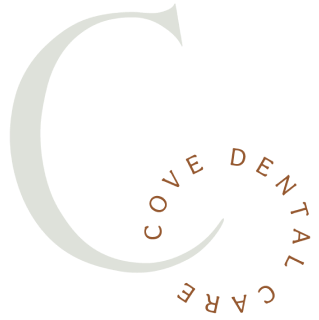105 Sheringham Dr Easley, SC 29642

Dental X-Rays in Easley, SC
While dental X-rays may seem daunting, they're a routine part of dental maintenance aimed at detecting minor oral issues early. At our Easley, SC office, they're quick, painless, and safe for most, including children. Before your next dental exam, consider how these X-rays can benefit your long-term oral health with the Cove Dental Care team.
While dental X-rays employ minimal radiation, they are generally safe. However, pregnant women should notify their dentist beforehand. Protective measures like lead aprons and thyroid collars can be used to minimize exposure to radiation, ensuring patient safety.
What information do dental X-rays provide?
Dental X-rays for children provide the dentist with a clear view of:
- The formation of tooth decay
- Teeth that are unable to emerge properly
- If wisdom teeth are present or shifting
- If there is sufficient space for permanent teeth to emerge correctly
In adults, dental X-rays provide the dentist with insights into:
- The progression and positioning of tooth decay
- Decay underneath dental restorations, like fillings
- The advancement of bone depletion
- Pockets of infection and fluid-filled sacs
- Certain types of oral malignancies
- Alterations in the root canal
What Types of X-Rays Are There?
Intraoral X-rays concentrate on the interior of the mouth and include:
- Bitewing X-rays
- Periapical X-rays
- Occlusal X-rays
Extraoral X-rays are utilized to detect issues within an individual's jaw and skull. These may consist of:
- Panoramic X-rays
- Tomograms
- Cephalometric projections
- Sialogram
- Digital imaging
- Cone beam CT
- MRI imaging
Further Information on Dental X-Rays
Dental X-rays represent a pivotal advancement in dentistry, providing critical insights into hidden oral structures while prioritizing patient safety. These diagnostic tools play a crucial role in identifying and planning treatments for various oral issues. Despite their invaluable benefits, stringent safety protocols ensure patients' well-being. This overview explores the importance of dental X-rays, their types, procedures, advantages, and the fundamental emphasis on safety.
Dental X-rays are indispensable in modern dentistry, revealing intricate details of oral health beyond what's visible to the naked eye. These images unveil the complexities of teeth and bones, facilitating accurate diagnoses, treatment planning, and ongoing disease monitoring. By transcending surface examinations, dental X-rays significantly enhance patient care and treatment outcomes.
Dental X-rays encompass various types, each serving specific diagnostic purposes. Bitewing X-rays focus on tooth crowns, aiding in cavity detection between teeth and bone density assessment. Periapical X-rays provide a detailed view of individual teeth, identifying infections, abnormalities, and potential issues. Panoramic X-rays offer a comprehensive view of the oral cavity, assisting in assessing oral health landscapes and impacted teeth. Orthodontic X-rays concentrate on tooth and jaw alignment, guiding personalized orthodontic treatment strategies.
Dental X-ray procedures prioritize patient comfort and safety. Patients wear lead aprons for protection against radiation exposure. A sensor or film is positioned in the mouth to capture images, and the X-ray machine is adjusted to swiftly capture desired views. The captured images are processed for analysis by dental professionals.
Dental X-rays offer numerous advantages, facilitating early issue detection, accurate diagnoses, tailored treatment plans, progress monitoring, and preventive care, thereby contributing to comprehensive oral health management.
Patient safety remains paramount in dental X-rays, with strict measures in place to minimize radiation exposure and provide lead shielding. Adhering to the ALARA principle, radiation exposure limits are kept as low as reasonably achievable, and X-ray protocols are tailored to individual needs. Special considerations are made for pregnant patients to ensure their safety during X-ray procedures.
Dental X-rays play a pivotal role in modern dentistry, enriching patient care and diagnostic capabilities. While offering invaluable insights, rigorous safety protocols are upheld to mitigate potential risks. Leveraging advanced technology, lead shielding, personalized approaches, and adherence to safety standards, dental professionals optimize the benefits of X-rays while safeguarding patient well-being. In the realm of oral healthcare, dental X-rays illuminate effective diagnoses, treatment strategies, and long-term preservation efforts, all within the confines of stringent safety measures.

